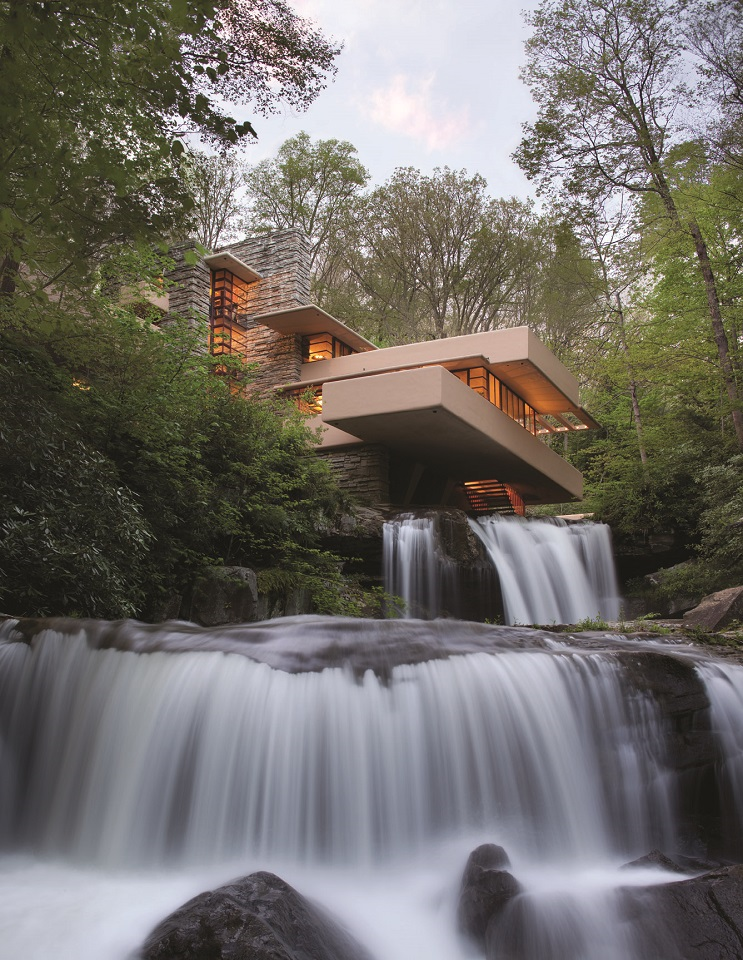News Release

Christopher Little, courtesy of the Western Pennsylvania Conservancy
News Release Date: July 9, 2019
Contact: NewsMedia@nps.gov
Designation marks the U.S.’s first works of modern architecture on the World Heritage List
WASHINGTON – Today, U.S. Secretary of the Interior David Bernhardt commended the decision by the World Heritage Committee to inscribe a group of eight buildings designed by American architect Frank Lloyd Wright as a World Heritage Site during its 43rd session in Baku, Azerbaijan this past weekend. Frank Lloyd Wright (1867 – 1959) is widely considered to be the greatest American architect of the 20th century.
The World Heritage Committee members agreed these buildings by Wright deserve to be recognized alongside sites around the world such as Stonehenge, the Pyramids of Egypt, and Grand Canyon National Park. The Wright works join the Sydney Opera House, the city of Brasilia, and the Bauhaus School in Germany as some of the examples of modern architecture recognized on the List. The group forms the 24th World Heritage Site in the United States of more than 1,000 sites worldwide.
"These works by Frank Lloyd Wright are highly valued, unique American contributions to the world’s heritage, and the recognition is deserved," said U.S. Secretary of the Interior David Bernhardt.
The new World Heritage Site, entitled "The 20th-Century Architecture of Frank Lloyd Wright," consists of:
-
Taliesin West in Scottsdale, Arizona - 1938
-
Hollyhock House in Los Angeles, California - 1919
-
Frederick C. Robie House in Chicago, Illinois - 1909
-
Unity Temple in Oak Park, Illinois - 1905
-
Solomon R. Guggenheim Museum in New York City - 1943
-
Fallingwater in Mill Run in Mill Run, Pennsylvania - 1935/1938
-
Herbert and Katherine Jacobs House in Madison, Wisconsin - 1936
-
Taliesin in Spring Green, Wisconsin - 1911
Scholars and experts selected the group from more than 400 works designed by Wright between 1909 and 1959, 27 of which are National Historic Landmarks, to showcase how Wright’s unique approach influenced the course of architecture across the world. The buildings are the most important and influential examples of Wright’s architectural solutions to the needs of Americans for housing, worship, work, and leisure. Drawing inspiration from global cultures, the buildings employ geometry and nature’s forms and principles as a basis and are highly accessible and appealing.
"A nomination with many properties like this is very complex to produce, and requires a huge investment of time and money," said National Park Service Deputy Director P. Daniel Smith. "This work could not have been done without a strong partnership with the Frank Lloyd Wright Building Conservancy and the contributions of the property owners."
The Department of the Interior undertook the nomination with the full cooperation and active support of the property owners of the eight buildings, each of which has been identified as a National Historic Landmark, a designation made by the Secretary of the Interior. The owners and the Frank Lloyd Wright Building Conservancy cooperated to prepare the nomination in consultation with the National Park Service’s Office of International Affairs - the principal technical agency for the U.S. Government’s participation in the World Heritage Convention.
The National Park Service manages all or part of 18 of the 24 World Heritage Sites in the United States. All of the Frank Lloyd Wright buildings are owned and operated by local governments, private organizations, or individuals.
Inclusion of a site on the World Heritage List does not affect U.S. sovereignty or management of the sites, which remain subject only to U.S., State and local laws. Detailed information on the World Heritage Program and the process for the selection of U.S. sites can be found at https://www.nps.gov/subjects/internationalcooperation/worldheritage.htm.
About the National Park Service. More than 20,000 National Park Service employees care for America's 419 national parks and work with communities across the nation to help preserve local history and create close-to-home recreational opportunities. Visit us at www.nps.gov, on Facebook www.facebook.com/nationalparkservice, Twitter www.twitter.com/natlparkservice, and YouTube www.youtube.com/nationalparkservice.
Last updated: July 9, 2019
